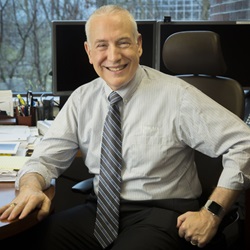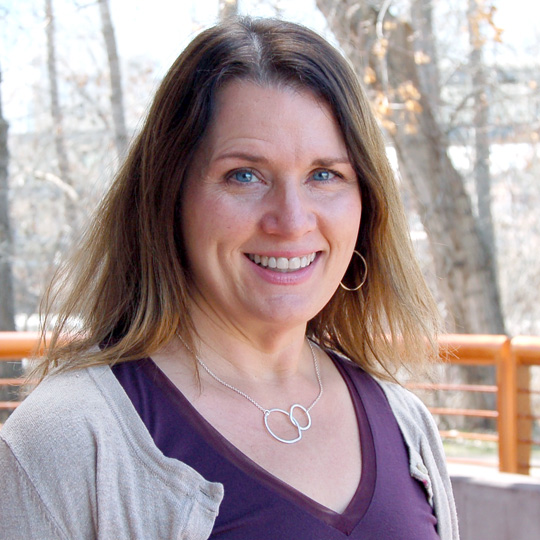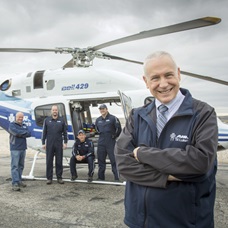Dr. Pate’s Prescription for Change
Hotspotting comes to St. Luke’s Boise’s ED, in collaboration with Boise State


It is humbling to realize that the health care system only contributes to about 10 percent of what determines a community’s health. So many other factors impact health, such as the availability of transportation to get to doctors’ visits and the financial means to be able to afford medications.
St. Luke’s has implemented a program to look for patients in our Boise emergency department with unmet needs that may affect their health, follow up with them and explore ways that we can meet those needs. This strategy sometimes has been called “hotspotting” in care environments; here is St. Luke’s Communications Coordinator Chereen Langrill with a report on how St. Luke’s is approaching the opportunity.
- David C. Pate, M.D., J.D.
Strong community partnerships help St. Luke’s achieve its mission to improve the health of people in the communities it serves, and a relationship with Boise State University is furthering that goal in the emergency department.
Some of the primary drivers of overall health, including housing, food, transportation and income, aren’t directly within the health system’s control, but the new collaboration gives St. Luke’s a foothold to help, according to Dr. Jim Souza, St. Luke’s Health System chief medical officer.
“Since we have taken on an accountability to population health and we only control 10 to 20 percent of it, we have to find a way to internally help people with those social determinants or partner with non-St. Luke’s entities,” he said.
A new program called Total Health in the ED was developed by St. Luke’s applied research division and partners with St. Luke’s department of social work and Boise State’s Work U program to connect people with the resources they need.
This approach helps to solve for problems that often extend beyond the immediate concern that brought the patient to the emergency department. For some, that might mean a primary care provider. In such cases, the Total Health team will work with the patient using St. Luke’s online scheduling tools to arrange visits with primary care providers. Those who face transportation barriers can be connected with ride programs.
The program aims to deliver quality service for patients, improve outcomes, provide a positive patient experience and offer valuable experience for students, according to Hilary Flint, manager for St. Luke’s applied research division. The project also can fill a void for people who aren’t getting the care they need on a regular basis.
“We are trying to reach those people who might fall through the cracks and improve their total health care,” Flint said. “It’s focusing on total health, not just fixing their broken arm or giving them medication.
“This program supports the premise that health and health behaviors are influenced on multiple levels, including psychological, social and environmental, and it is important that they are addressed at multiple levels.”
Dr. Souza became interested in developing the program after he learned about something similar in Colorado. He saw an opportunity to work with Boise State, already a valued St. Luke’s partner, and thought it would provide an opportunity to dive deeper into population health.
“What we’re hoping with these students is to get information and insight,” Dr. Souza said. “That will direct us where to go next.”

Starting in September, two Boise State pre-medicine students will be in place weekdays at St. Luke’s Boise’s emergency department, where they will interact with patients identified as strong candidates for the program. Collin Hunter and Samuel Peterson learned about the Total Health program through Boise State’s Work U program, and after submitting applications and participating in interviews they were selected as the first two students. Metrics gathered during this first semester will help program leaders determine if (and how) the program should be expanded going forward.
The idea of targeting specific populations for wraparound support has been referred to in the health care community as “hotspotting” and has been the topic of numerous studies. In Boise, the approach doesn’t necessarily only focus on specific groups but is more situation-based, Flint said.
“There might be someone in there who has multiple chronic issues that need to be addressed in addition to the specific thing they are being seen for at that moment, and maybe they haven’t had an opportunity to disclose that issue to the provider they see in the ED,” she said. “We are trying to assess how else we can help in their total health care, in addition to the need they are being seen for today in the ED.”
The students will connect with any person who comes through the ED who needs any type of service (housing, a primary care provider, etc.). Through physicians in the ED or the program supervisor from St. Luke’s social work department, the students will be asked to consult with patients to see what might help them.
Whenever possible, the students will connect patients with resources during that conversation, which could include arrangements for additional needed medical appointments. If transportation barriers would prevent the patient from reaching appointments, the students will connect them to ride programs. Patients who have limited access to nutritious food will be connected to community organizations that can help them.
On-the-spot help is offered based on the belief that patients are more likely to follow through when an appointment has already been scheduled or transportation has already been identified.
“It is possible we are helping people who would otherwise fall through the cracks,” Flint said.
About The Author

Chereen Langrill was formerly a communications coordinator for St. Luke’s Health System.



